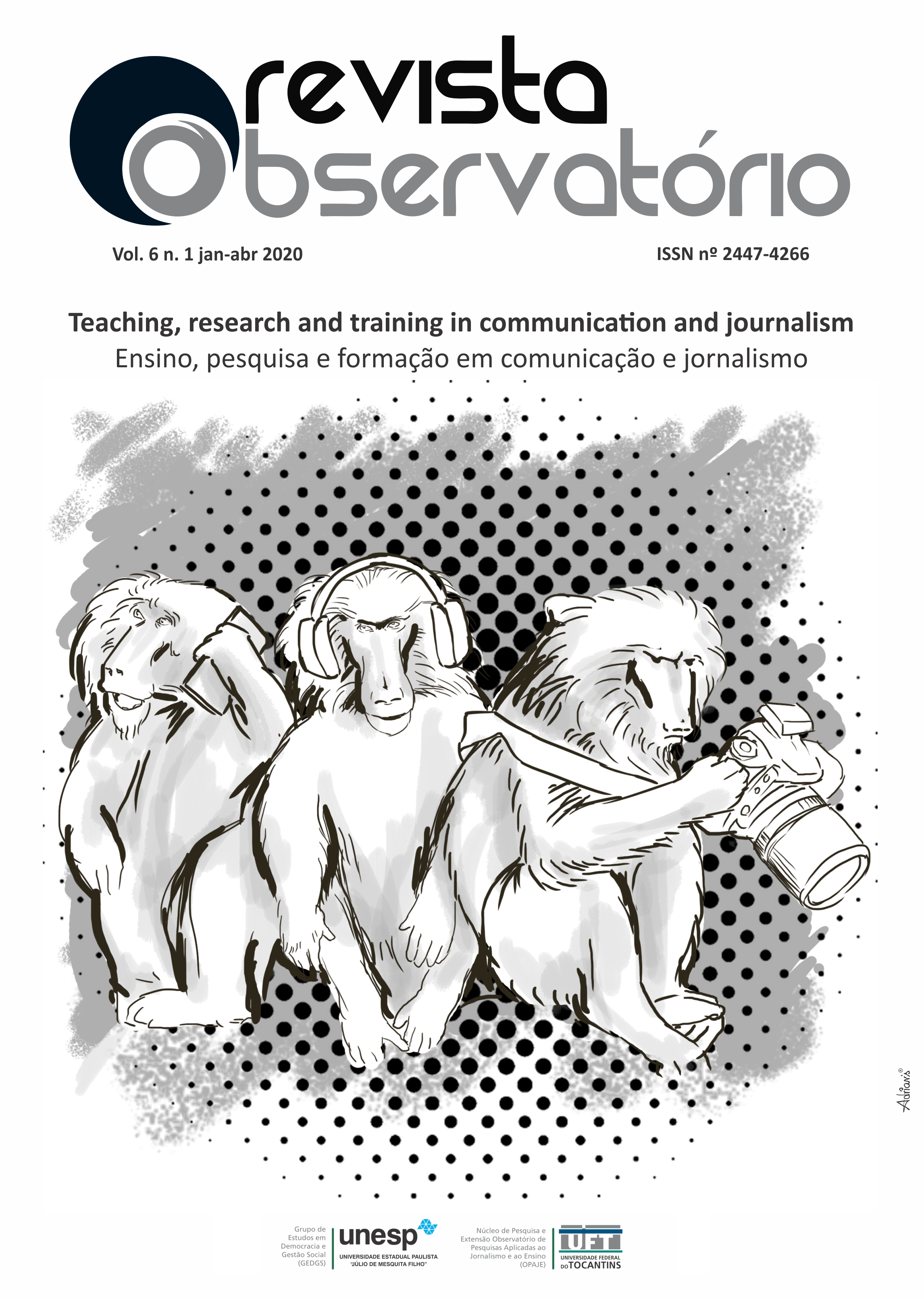MEDIA SCIENCE FAPESP: two decades of projects in science journalism in retrospect
DOI:
https://doi.org/10.20873/uft.2447-4266.2020v6n1a11enPalavras-chave:
Science Journalism, Science communication, Fapesp, Media ScienceResumo
A Fapesp lançou, em 1999, o Programa José Reis de Incentivo ao Jornalismo Científico, também conhecido como Bolsa MídiaCiência. Este artigo identifica o perfil dos projetos selecionados, quem são os principais beneficiados com estas bolsas, as propostas contempladas e quais tipos de mídias são utilizados para a produção e veiculação da divulgação científica durante os 20 anos do projeto. Verificou-se que o Laboratório de Estudos Avançados em Jornalismo da Unicamp foi o que mais recebeu recursos ao longo dos anos, sendo Carlos Vogt o pesquisador responsável por mais projetos no período e que a revista eletrônica ComCiência é o principal veículo utilizado para divulgação dos projetos contemplados.
Downloads
Referências
Bueno, W. D. C. (2009). Jornalismo científico: revisitando o conceito. Jornalismo científico e desenvolvimento sustentável. São Paulo: All Print, 157-78.
Fundação de Amparo à Pesquisa do Estado de São Paulo (2000) (Activities Report). São Paulo, SP. Retrieved March 10, 2020, from http://www.fapesp.br/publicacoes/relat2000.pdf.
Fundação de Amparo à Pesquisa do Estado de São Paulo, Biblioteca Virtual. Projetos de Pesquisa. Bolsas no Brasil. Retrieved November 18, 2019, from https://bv.fapesp.br/pt/pesquisa/buscador/?q2=(%28percepcao_exact%3A%22Jornalismo%20Cient%C3%ADfico%22%29)%20AND%20(django_ct:bolsas.bolsa)&selected_facets=projetos_pesquisa_pt%3A01%3BBolsas%20no%20Brasil&sort=data_inicio.
Julião, A. (2019, junho 12). Mídias sociais são estratégicas para divulgação de pesquisas. Folha de São Paulo. Retrieved March 10, 2020, from https://www1.folha.uol.com.br/ciencia/2019/06/midias-sociais-sao-estrategicas-para-divulgacao-de-pesquisas.shtml.
Lima, L. C. B. (2011). Divulgação científica em assessorias de comunicação: o caso da FAPESP. Dissertação de Mestrado. Universidade Estadual de Campinas, Campinas/SP.
Massarani, L. M & Alves, J. P. (2019). A visão de divulgação científica de José Reis. Ciência e Cultura, 71(1), 56-59. Retrieved March 10, 2020, from http://cienciaecultura.bvs.br/scielo.php?script=sci_arttext&pid=S0009-67252019000100015&lng=en&nrm=iso.
Vogt, C; Cerqueira & N; Kanashiro, M. (2008). Divulgação e cultura científica. ComCiência, Campinas, n. 100. Retrieved March 10, 2020, from http://comciencia.scielo.br/scielo.php?script=sci_arttext&pid=S1519-76542008000300001&lng=en&nrm=iso.
Publicado
Como Citar
Edição
Seção
Licença
[PT] Autores que publicam nesta revista concordam com os seguintes termos:
1. Autores mantém os direitos autorais e concedem à revista, sem pagamento, o direito de primeira publicação, com o trabalho simultaneamente licenciado sob a Creative Commons Attribution License (CC BY-NC 4.0), permitindo o compartilhamento do trabalho com reconhecimento da autoria do trabalho e publicação inicial nesta revista.
Leia todos os termos dos direitos autorais aqui.


